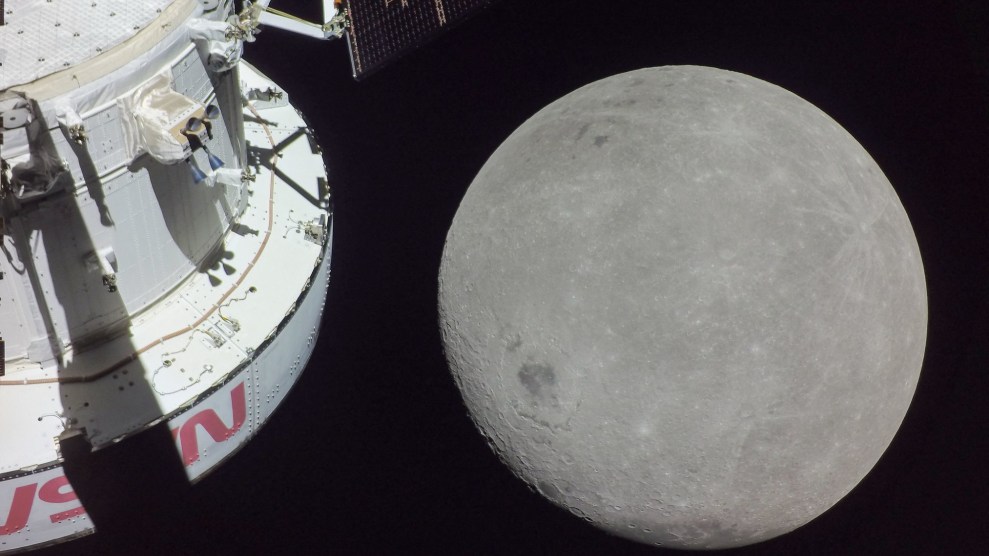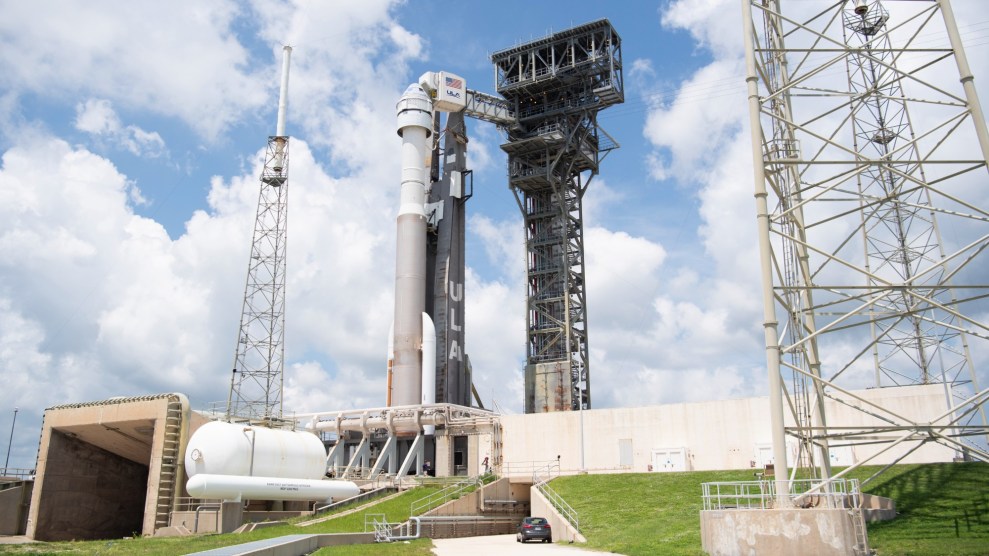
The moon looms large just beyond the Orion spacecraft.Abaca/ZUMA
In the absence of a World Cup match to watch this Sunday, you might perhaps be interested in another gravitational event to follow: the return of the Orion capsule to Earth. It will mark the end of Artemis I, a mission test to see if NASA can send astronauts back to the moon 50 years after the crew of Apollo 17 last accomplished the feat. The US might not be great at soccer, but hey, at least there is the moon.
The space agency successfully launched the uncrewed Space Launch System megarocket after several failed attempts on November 16. After a 25-day journey and coming within about 80 miles of the surface of the moon, the Orion spacecraft is expected to re-enter the atmosphere at 25,000 mph—32 times the speed of sound—and splash down at 12:40 p.m. ET in the Pacific Ocean near Guadalupe Island off the Baja California peninsula.
Artemis I, if successful, is projected to be followed by other missions that include sending four astronauts for a lunar flyby in 2024 and a landing mission one year later that could include a woman and a person of color. By 2025, the Artemis program will have cost an estimated $93 billion, a stratospheric sum that prompted some critics to characterize it as a “gigantic waste of money.”
Artemis I: Or, To the Moon and Back Again. 🚀
Live coverage of our @NASA_Orion spacecraft’s return to Earth will begin at 11am ET (1600 UTC) on Dec. 11, with splashdown in the Pacific Ocean near Guadalupe Island at 12:39pm ET (1739 UTC). Watch it live: https://t.co/7hsnUGlwJs pic.twitter.com/IgcSctF36D
— NASA (@NASA) December 10, 2022
If NASA already safely sent men to the moon and back more than five decades ago, then what’s the big deal, you might be wondering. As Marina Koren explains in the Atlantic, the Artemis expedition “doesn’t just want to re-create Neil Armstrong’s famous first step with a new cast of characters—though it will certainly do that—but also reach for new firsts, including a space station in orbit around the moon and perhaps even a base on the surface.” The lunar exploration program also serves as “preparation for human missions to Mars,” according to the space agency.
Although the spacecraft was unmanned, NASA included a few “Easter eggs” and secrete messages in the crew cabin, including the image of a cardinal, a tribute to former Orion Program manager and St. Louis Cardinals fan Mark Geyer, and a coded reference to notes of Frank Sinatra’s “Fly Me to the Moon,” a song that became associated with the Apollo missions to the moon.
Among the Moonikins and experiments aboard @NASA_Orion are a few “Easter eggs” — from lasting tributes to colleagues, to nods to NASA’s Apollo history, and even puzzles with a hidden meaning.
Were you able to find them all? https://t.co/SoSEWDysHD https://t.co/yN6oAO5Jsf
— NASA (@NASA) December 10, 2022













